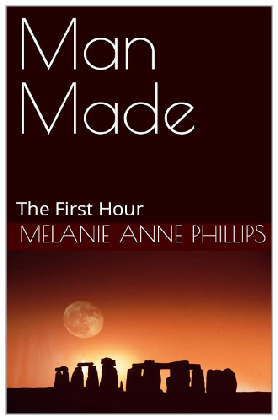|
For Story Structure |
|
For Story Development |
|
|

Read the Science Fiction Thriller
From the founder of Storymind
Man Made follows a mysterious force as it sweeps around the globe erasing anything man made -
Governments stagger under the panic, religions are at a loss for an explanation, scientists strive for any means to stop or divert the phenomenon, and the world’s population from families to individuals struggle to prepare for The Event, which will drive humanity back beyond the stone age.
The Event is coming.
Are you prepared?
Copyright Melanie Anne Phillips
|
|
Free Writing Resources
Never Be Stuck for a Plot Again!
Some time ago I wrote an article outlining a new method of overcoming writer’s block entitled, The Creativity Two-
The idea is to switch back and forth between analytical mode and creative mode by asking specific questions about your emerging story, then answering them in as many creative ways as you can. Then, you repeat the process by asking questions about each of the answers and then answering THOSE questions. In short order, you end up with hundreds of plot points.
I’m going to use the same story development concept example from The Creativity Two-
Story Concept Example:
A sheriff is trying to stop a gang of cutthroats from robbing a western town.
To build a plot from this short log line using the two-
Question:
How does the Marshall first find out about the gang’s activities?
My potential answers:
1. The gang rides into town hootin’ and hollarin’
2. He is told about the situation, right after he accepts the job and pins on the badge.
3. He saw a newspaper account of the town’s gang problem and came there on his own to get the job to clean up the gang.
4. The gang sends a telegram to the marshall’s home to let him know they are in town shaking it down.
Okay, that’s the first step – analytical (asking questions), followed by the creative second step (coming up with a range of potential answers). This breaks the mind free from the linear thinking of trying to come up with a single idea to answer each question. By letting the Muse freely provide a variety of alternative explanations, each creates a new idea thread from which to choose.
Then you repeat the process, but this time, ask you questions about each of the potential answers you just devised. For example:
Answer 3 from above was:
He saw a newspaper account of the town’s gang problem and came there on his own to get the job to clean up the gang.
So, now you ask several questions about that:
Questions:
1. Where was he when he saw the newspaper?
2. Has he done this kind of thing before?
3. Why does he want to interfere?
4. What makes him think he is qualified to do anything about the problem?
5. Does he notify the town’s mayor or governing body before he shows up?
Then, you repeat the second “creative” step and provide several potential answers for each of the questions.
Example:
Question 2. Has he done this kind of thing before?
Potential answers:
1. Yes, he is independently wealthy and does this all the time as a hobby.
2. Yes, one time. His family was killed when he was a child and in his first adventure, he read a newspaper account of a child who was made an orphan due to a gang’s violence in a town in the East. He brought the gang to justice and found a foster home for the child. It was so fulfilling, his ordinary job has been miserable since, and this new article has made him realize he needs to step forward to give his live meaning.
I could go on and on, but you get the idea.
Now, through this exercise, what plot events have we already created for our story? Perhaps these:
1. A scene showing the Marshall as a young boy when his family was killed (by who and how and where can all be figured out using the Creative Two-
2. A scene showing the Marshall see the first article and decide to get involved.
3. Several scene, perhaps in a montage or in a scrapbook of how that first adventure went.
4. A scene of him encountering this new newspaper article and how it affects him.
5. A scene of him quitting his job (how much he needs the money, what kind of job, and so on can be created using the two-
6. A scene of him arriving at the town.
7. How he gets the job (again, use the two-
8. His first encounter with the gang (casual, antagonistic, high or low tension, anybody get hurt?, did the gang know he was the Marshall when they first encounter?)
Okay, again, I could go on and on and so could you. Just use the ol’ two-
The details in each scene can be created using the very same method, once you have the main plot line sequence.
So never be stuck for a plot again! Use the Creativity Two-